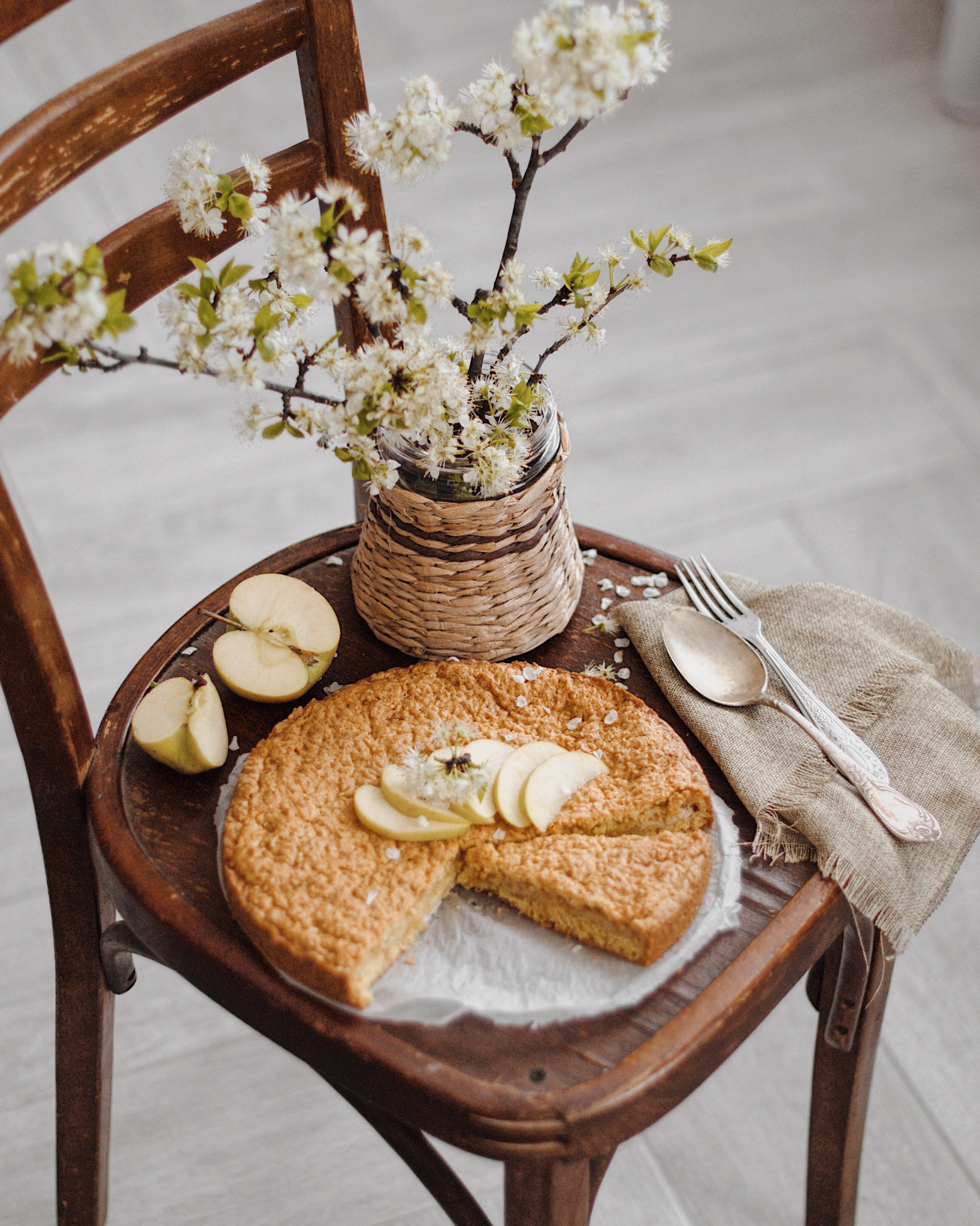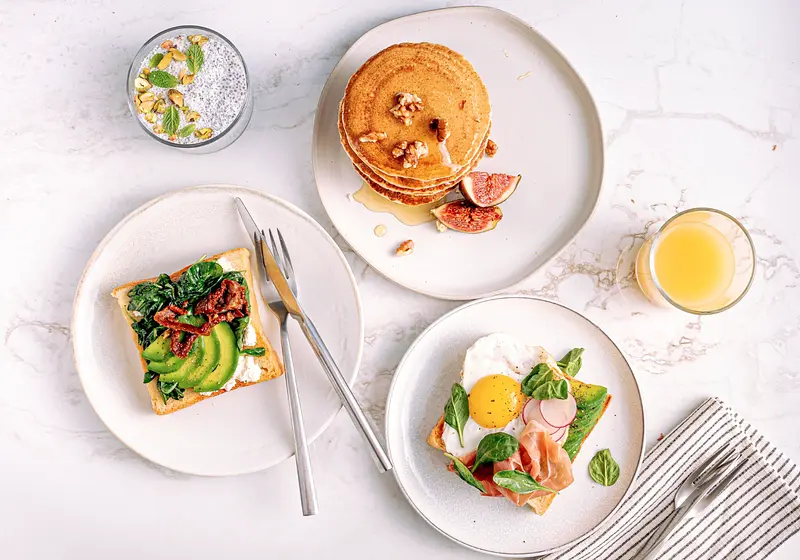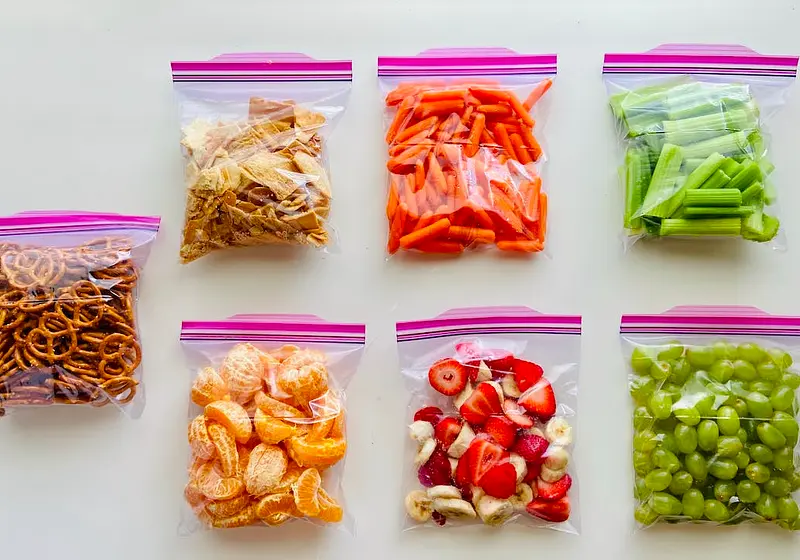Food serves as a universal language that connects people across borders and cultures. It promotes understanding, sparks conversations, and creates shared experiences. Exploring the diverse flavours and culinary traditions of different cultures enables us to appreciate the richness of our world and embrace the interconnectedness of humanity.
The following seven recipes provide a mere glimpse into the vast array of culinary wonders waiting to be discovered around the world.

Let us slide into your dms 🥰
Get notified of top trending articles like this one every week! (we won't spam you)Baklava - Turkey
The origin of baklava is a very controversial topic and several nations, including Turks, Greeks, Arabs, Armenians and Bulgarians claim themselves the originators of baklava. The ingredients of Baklava include (no measurements really required, put as much or as little as you like):
- Phyllo sheets or filo
- Melted butter
- Walnuts
- Sugar water
- Lemon wedge
Turkish Baklava is usually prepared in large pans and rolled by hand, but here the phyllo dough is sold in the markets. For those who can not buy may also roll it at home instead.
Starting with the syrup, transfer 1 ½ cups of water into a pot. Add the sugar when it boils, then the lemon juice and turn off the heat. The syrup is now ready.
Melt some butter in a small pan and coat it with vegetable oil. Cut the phyllo according to the size of your tray and brush some oil between every 2 layers of phyllo. When you are done placing half of the phyllo, spread a layer of minced pistachio. Place the rest of the phyllo. Once you are done, slice your baklava into rectangles. Pour the leftover oil after you cut the baklava (try not to use the bubbly part, which burns quickly). In a 180C (360F) pre-heated oven, bake for around 25 to 30 minutes. When both the tray and the syrup warm down, pour the syrup on the baklava.

Take the Quiz: What Ramen Are You?
There are sooo many pre-packaged Ramen brands out there. Which one should you try/best fits your personality?
Tandoori Chicken - Punjab, India
The dish is attributed to Kundan Lal Gujral, a Hindu from Punjab state who fled newly formed Pakistan after the 1947 partition of India, and opened a restaurant in Delhi. Tandoori chicken quickly became popular throughout South Asia and the Middle East as well as in Western countries. Please note that this is not butter chicken.
There are many recipes, of course, and this is just one of them.
Ingredients you need:
- 3 tablespoons vegetable oil
- 1 teaspoon ground coriander
- 1 teaspoon ground cumin
- 1 teaspoon ground turmeric
- 1 teaspoon cayenne
- 1 tablespoon garam masala
- 1 tablespoon sweet (not hot) paprika
- 1 cup plain yogurt (can sub buttermilk)
- 2 tablespoons lemon juice
- 4 garlic cloves, minced
- 2 tablespoons minced fresh ginger
- 1 teaspoon salt
- 4 whole chicken leg quarters (drumsticks and thighs), skinless, bone-in
- Red food colouring (optional)
First, clean the chicken legs. Next, in a large bowl, mix in all the spices (and a few drops of food colouring if desired) until homogenous. This is the marinade.
Put the chicken in the marinade and coat thoroughly. Cover and refrigerate overnight. There are many alternative ways to cook this in a modern kitchen (traditionally cooked in a tandoor). You can cook it in an oven, air fryer or a skillet. For an oven (the way most people at home do it), in a preheated oven (200 degrees Celsius) cook each side until it is no longer raw (around 15 minutes).
Jollof Rice - Nigeria/West Africa
Take 8 cups of rice (feel free to halve or reduce the recipe as needed. Traditionally, this is a food eaten during a gathering — party food basically)
For the blended mix
- 3 medium bell peppers
- 5 pieces of tomato (Roma preferred)
- 2 scotch bonnet pepper
- 1/2 onion
For frying:
- 1/2 cup vegetable oil(or oil of choice, just not olive oil please)
- 1 large onion( chopped)
- 18 oz (2 1/4 cup) of tomato paste (tin tomato)
- 2 Knorr seasoning cubes (Knorr is a commonly used brand. It is essentially chicken stock cubes)
- 2 tablespoons thyme
- 1 tablespoon curry
- 2 bay leaves
- 2 tablespoons of salt
Miscellaneous:
- 2.5 rich cup chicken stock (substitute with water)
- 1 cup water
First, blend the ingredients in the blended mix section together. Next, add the blended mix to a pot and add all ingredients listed for frying. Once the majority of the water is gone, add the chicken stock, water, and freshly washed rice.
Cover the pot with foil and cook for 25 minutes (if 8 cups of rice is used). For anyone who wants to try this recipe, when the pot gets covered with foil, put the heat on the lowest setting, otherwise, your food will burn. Jollof rice is often paired with beef, chicken, goat, and fish (fried, grilled, or stewed), or eggs (boiled, fried, or scrambled). So feel free to grill up some chicken to eat with!
Pajeon (파전) - Korea
Ingredients for this recipe include (no specific measurements required, and the batter consistency depends on you):
- Green onions (scallions)
- all-purpose flour (alternative: chickpea flour, rice flour, or buckwheat flour)
- corn starch/potato starch
- medium-sized carrot
- water
- soybean paste
- sugar and salt to taste
- vegetable oil
Dipping sauce:
- Soy sauce
- Honey
- Vinegar (you can use either white vinegar, rice vinegar, or apple cider vinegar)
- Toasted sesame oil
- Garlic
- Gochugaru (red pepper flakes) – this is optional and can be added if you prefer the sauce a bit spicy.
Firstly, make the dipping sauce. Next, gather the ingredients and combine them in a saucepan over medium heat.
Make the pancake batter by combining cornstarch, flour, sugar, and salt. Add the julienned carrots and sliced scallions into the batter. Fry it in a pan for a few minutes until the pancake turns golden brown(time taken depends on thickness and size of pajeon).
Flip to the other side and repeat. Just like that, your Pajeon is ready!
Perhaps a slightly easier recipe
Seafood Paella - Spain
The first paella is believed to have been cooked by Valencian farmers. The farmers cook the food they have in their hands for lunch. It was made of rice and whatever was to hand around the rice fields and countryside: tomatoes, onions and snails (not in this recipe), with a few beans added for flavour and texture.
- 3 cloves garlic
- 1/2 onion
- 1/2 red bell pepper
- 1 tube of cleaned squid
- 12 raw jumbo shrimp peeled & deveined
- 8 fresh mussels cleaned
- 1/3 cup extra virgin olive oil (80 ml)
- 1/2 cup tomato sauce (112 grams)
- 1/2 tsp sweet smoked Spanish paprika (1.30 grams)
- 2.5 cups fish broth (600 ml)
- 1/4 tsp saffron threads or powder 0.17 grams (a saffron substitute can also work)
- 1 cup uncooked round rice (200 grams)
- 2 lemon wedges
- a handful of finely chopped parsley
- sea salt & black pepper
Roughly chop 3 cloves of garlic, finely dice 1/2 onion, finely chop 1/2 red bell pepper and cut 1 cleaned tube of squid into small squares. Heat a paella pan (or whatever you have on hand) with medium-high heat and add 1/3 cup extra virgin olive oil. After 1 minute, season the olive oil with sea salt and add in the cut squid, mix with the olive oil and cook for 1.5 to 2 minutes, then remove from the pan and set aside.
Next, add the diced onion & chopped garlic into the pan, and mix with the olive oil. After 1 minute, add in the chopped bell pepper and continue to mix so everything evenly sautes.
After 3 minutes, add in 1/2 cup tomato sauce and season everything with 1/2 tsp sweet smoked paprika, sea salt & black pepper. Mix together. After 2 minutes and the tomato sauce has thickened, add the squid back into the pan, mix together, then add in 2 1/2 cups of fish broth and the saffron (or saffron substitute).
Once the broth comes to a boil, add 1 cup of round rice (note that it has to be uncooked). Give it one final mix so everything is evenly distributed. After 5 to 6 minutes, add in the shrimp and the cleaned mussels.
After another 5 minutes, lower the fire to low-medium heat and simmer until all the broth has been absorbed by the rice. Then hit back to medium-high heat to achieve the socarrat (caramelized rice), just go between 1 to 2 minutes, then remove the pan from the heat and cover. After 5 minutes, uncover the pan, and garnish the paella with lemon wedges and finely chopped parsley.
Borscht - Ukraine
- 1 (16-ounce) package of meat sausage
- 3 medium beets, peeled and shredded
- 3 carrots, peeled and shredded
- 3 medium baking potatoes, peeled and cubed
- ½ medium head cabbage, cored and shredded
- 1 cup diced tomatoes, drained
- 1 tablespoon vegetable oil
- 1 medium onion, chopped
- 1 (6 ounces) can of tomato paste
- 8 ¾ cups water, divided, or as needed
- 3 cloves of garlic, minced
- 1 teaspoon white sugar, or to taste
- salt and pepper to taste
- ½ cup sour cream, for topping
- 1 tablespoon chopped fresh parsley for garnish
Crumble the sausage into a skillet set over medium-high heat. Cook and stir until no longer pink. Remove from the heat and set aside.
Fill a large pot halfway with water (about 8 cups) and bring it to a boil. Add the sausage to the pot, cover the pot, and return to a boil. Add the beets and cook until they have lost their colour. Add the carrots and potatoes and simmer until tender, about 15 minutes. Add the cabbage and diced tomatoes to the pot. Heat the oil in a skillet over medium heat. Add the onion and cook until tender. Stir in the tomato paste and the remaining 3/4 cup water until well blended, then transfer to the pot. Add garlic to the soup, cover, and turn off the heat. Let it stand for 5 minutes. Stir in the sugar and season with salt and pepper. Ladle into serving bowls. Garnish with sour cream and parsley.
The above recipe is from Allrecipes. Another authentic way of making Borscht can be seen in the following video.
Green Mango Salad (ส้มตำมะม่วง) -Thailand/SEA
For the Salad Dressing:
- 3 tablespoons fish sauce, or 1/4 cup soy sauce (if you want it vegan/vegetarian)
- 1/4 cup freshly squeezed lime juice
- 2 tablespoons brown sugar, or more to taste
- 1 to 2 teaspoons Thai chilli sauce (or 1/3 to 1/2 teaspoon dried chile flakes)
For the Salad:
- 1/4 cup dry shredded unsweetened coconut
- 2 firm, unripe green mangoes
- 2 cups bean sprouts
- 1/2 cup coarsely chopped cilantro
- 3 to 4 thinly sliced spring onions
- 1 cup cooked, coarsely chopped chicken, shrimp, or fried tofu,
- 1 small red chile, thinly sliced,
- (optional) 1/4 cup peanuts or cashews, whole or coarsely chopped 1/3 cup small fresh basil
It's a salad, so you just need to sort of add the ingredients together. Just remember to place the coconut in a dry frying pan or wok. "Dry-fry" the coconut, as if you were stir-frying it, for 2 to 3 minutes over medium heat or until it turns a light golden brown and is fragrant. Finally, the last step of the recipe: enjoying the meal!
Food can break down stereotypes and prejudices by providing a deeper understanding of different cultures. It has a remarkable ability to connect people across borders and cultures. When we taste the flavours of foreign cuisine, we gain insight into the unique perspectives, values, and histories of the people who prepare and enjoy those dishes.
This understanding helps dispel misconceptions and promotes empathy, encouraging dialogue and appreciation for diverse cultures. I hope to have done all the dishes justice. Happy feasting!



















